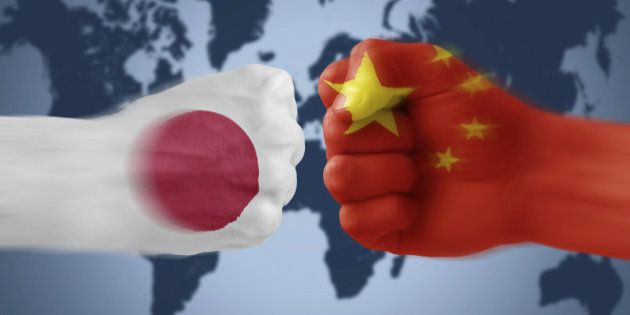الصينية مقابل مصدري السيارات اليابانية: تحليل مقارن للمزايا والعيوب
صناعة السيارات العالمية تنافسية للغاية, حيث تلعب كل من الصين واليابان أدوارا مهمة كمصدرين رئيسيين للسيارات. في هذه المقالة, سوف نقارن بين مصدري السيارات الصينيين واليابانيين, تسليط الضوء على مزاياها وعيوبها في السوق الدولية.

(صورة: الصين vs اليابان)
مزايا
- القدرة التنافسية من حيث التكلفة: مصدرو السيارات الصينيين غالبا ما تقدم أسعارا تنافسية بسبب انخفاض تكاليف الإنتاج, العمل, ونفقات المواد الخام. يمكن أن تجذب ميزة التكلفة هذه العملاء الحساسين للسعر في مختلف الأسواق.
- قدرة إنتاجية كبيرة: شهدت صناعة السيارات في الصين نموا كبيرا, مما أدى إلى قدرات إنتاجية هائلة. وهذا يسمح لمصدري السيارات الصينيين بتلبية متطلبات مجموعة واسعة من الأسواق الدولية بكفاءة.
- مجموعة منتجات متنوعة: ينتج مصدرو السيارات الصينيون مجموعة متنوعة من المركبات, من الموديلات الصديقة للميزانية إلى السيارات الفاخرة والسيارات الكهربائية (المركبات الكهربائية). هذا التنوع يروق لشرائح العملاء المختلفة على مستوى العالم.
- تزايد الابتكار التكنولوجي: في السنوات الأخيرة, خطت شركات صناعة السيارات الصينية خطوات كبيرة في الابتكار التكنولوجي, لا سيما في تطوير المركبات الكهربائية والمستقلة. هذا يضعهم كلاعبين رئيسيين في مستقبل صناعة السيارات.
- الدعم والحوافز الحكومية: تدعم الحكومة الصينية بنشاط تطوير وتصدير مركبات الطاقة الجديدة, تقديم حوافز وإعانات مختلفة. يعزز هذا الدعم القدرة التنافسية لمصدري السيارات الكهربائية الصينيين.
مساوئ
- تصور الجودة: أثارت بعض الأسواق الدولية مخاوف بشأن الجودة الشاملة وموثوقية السيارات الصينية. لكسب الثقة, يجب على مصدري السيارات الصينيين التركيز على تحسين جودة المنتج والالتزام بتدابير صارمة لمراقبة الجودة.
- التعرف على العلامة التجارية: تتمتع ماركات السيارات اليابانية الراسخة بتقدير عال للعلامة التجارية وسمعة طيبة في جميع أنحاء العالم. غالبا ما يواجه صانعو السيارات الصينيون تحديات في بناء صورة قوية للعلامة التجارية العالمية.
- مخاوف الملكية الفكرية: واجه مصدرو السيارات الصينيون انتقادات بسبب انتهاكات الملكية الفكرية ومخاوف بشأن حماية الشركات الأجنبية’ تقنيات الملكية في المشاريع المشتركة.
- خدمة ما بعد البيع: يعد إنشاء شبكة قوية لخدمة ما بعد البيع أمرا ضروريا لإرضاء العملاء. قد يحتاج مصدرو السيارات الصينيون إلى المزيد من الاستثمار في تطوير بنية تحتية شاملة للخدمات في الأسواق الدولية.
- الامتثال التنظيمي: البلدان المختلفة لديها متطلبات تنظيمية ومعايير سلامة مختلفة. يمكن أن يمثل ضمان الامتثال لهذه اللوائح تحديا لمصدري السيارات الصينيين الذين يدخلون أسواقا جديدة.
استنتاج
يتمتع كل من مصدري السيارات الصينيين واليابانيين بمزاياهم وتحدياتهم الفريدة في سوق السيارات العالمي. يستفيد المصدرون الصينيون من القدرة التنافسية من حيث التكلفة, قدرة إنتاجية كبيرة, ومجموعة متنوعة من المنتجات.
لكن, يجب أن يعالجوا تصور الجودة, التعرف على العلامة التجارية, ومخاوف خدمة ما بعد البيع لتعزيز قدرتها التنافسية العالمية.
من جهة أخرى, يتمتع المصدرون اليابانيون بسمعة طيبة في الجودة والابتكار ولكنهم قد يحتاجون إلى الاستجابة لضغوط التسعير من المنافسين الصينيين.
في نهاية المطاف, التحسينات المستمرة, ابتداع, وسيحدد التخطيط الاستراتيجي نجاح كل من مصدري السيارات الصينيين واليابانيين على المسرح الدولي.

 السيارات في الصين
السيارات في الصين